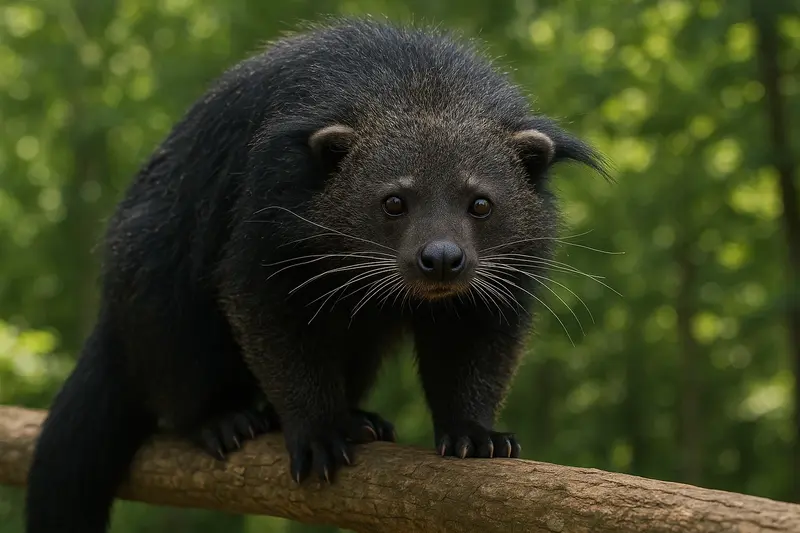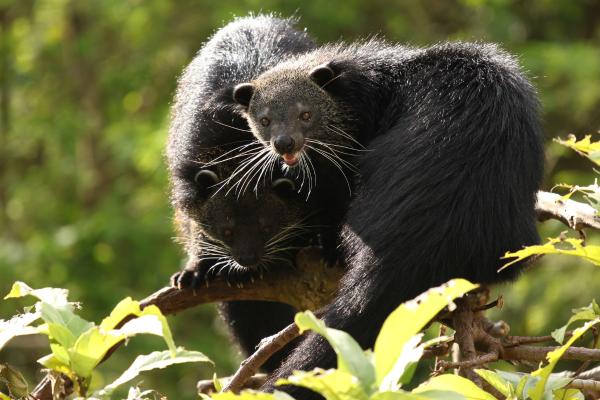The binturong (Arctictis binturong), also known as the bearcat or manturón, is a carnivorous mammal in the family Viverridae, subfamily Paradoxurinae. It is native to South and Southeast Asia and is notable for its popcorn-like scent and important ecological roles such as seed dispersal and population control of small animals.

The binturong has a long, heavy body with short, muscular limbs.
Its prehensile tail is thick at the base and tapers off into a curl at the tip, aiding in gripping branches.
It has a short, pointed snout, large dark eyes, and small rounded ears with white edging and black tufts at the tips.
Its thick, dark fur provides camouflage, and it has strong claws for defense.
The species has excellent night vision, a well-developed sense of smell and hearing, and long, sensitive whiskers for spatial awareness.
Both male and female binturongs have scent glands. In males, the gland is located between the scrotum and penis; in females, it's on either side of the vulva. These glands release a strong aroma resembling buttered popcorn, due to the volatile compound 2-acetyl-1-pyrroline, which also occurs in baked bread and popcorn.

Binturongs are found across:
South and Southeast Asia: including India, Nepal, Bangladesh, Bhutan, Myanmar, Thailand, Malaysia, Cambodia, Vietnam, and Yunnan (China);
Indonesia (Sumatra, Kalimantan, Java);
and the Philippines.
They prefer tall, dense forests ranging from sea level up to 3,000 meters above sea level.
Though classified as a carnivore, the binturong is primarily frugivorous, especially fond of figs (Ficus species). Field observations have documented groups feeding on figs for several nights in a row in northeastern India. It is also considered omnivorous, supplementing its diet with small mammals, birds, fish, worms, insects, and eggs.

Binturongs are primarily arboreal, moving adeptly through trees using their prehensile tails for balance and grip. However, their heavy bodies make them poor jumpers, so they often descend to the ground to move between trees.
Their activity patterns are flexible—typically nocturnal or crepuscular, but in low-predation areas, they may remain active during the day. Uniquely among viverrids, the binturong is a proficient swimmer, allowing it to cross rivers or swamps in search of food or safety.
The species communicates using a variety of vocalizations, including grunts, howls, and whistles—for alarm calls or mating signals. Though generally docile, a threatened binturong can defend itself with sharp claws, a powerful bite, and its tail. Still, its preferred strategy is stealth—moving quietly and staying hidden in foliage to avoid detection.
animal tags: binturong
We created this article in conjunction with AI technology, then made sure it was fact-checked and edited by a Animals Top editor.